Like many of you out there, the intricate back-and-forth dance between fishing and aquaculture had me wrapped around its little finger. It’s almost as though they exist in entirely discrete universes.
It was a puzzle that spun my brain into overdrive while trying to pinpoint best practices for each realm. After grasping at straws and heading down the rabbit hole with resources like The State of World Fisheries and Aquaculture report for 2022, I finally have some intriguing insights tucked under my belt.
In this cozy slice of cyber-space we’ve made our own on this blog, we’re about to embark on an enlightening journey together. From sustainable fishing tactics that respect Mother Nature’s bounty, right through to the cutting-edge innovation sprouting in aquaculture – all aimed at propelling us towards being more responsible citizens of this vast oceanic world.
So grab your favorite mug filled to the brim with something warm (or cold – no judgements here), get comfy, and let’s plunge headfirst into uncharted waters together. Sound good?
Key Takeaways
- Sustainability is key: Sustainable fishing and aquaculture practices are crucial for the long-term health of our oceans and the availability of seafood as a protein source. This involves balancing our use of fish and sea life to ensure their ongoing presence in nature, while also considering the impacts on other animals and their habitats.
- Overfishing poses risks: Overfishing is a significant issue that can lead to declining fish populations, disrupt ecosystems, and impact biodiversity. It’s important to understand the consequences of overfishing and work towards sustainable fishing practices to protect marine life for future generations.
- Technology plays a role: Advancements in technology have revolutionized fishing by enabling us to track fish populations, analyze data, and make informed decisions about fishing practices. Using technology responsibly can help conserve fish stocks and minimize harm to marine ecosystems.
- Different methods have different impacts: Various fishing methods exist, each with its own environmental effects. Bottom trawling may cause habitat destruction, while gillnets can impact fish populations. Understanding these methods’ sustainability implications is essential for protecting our oceans’ health.
Understanding Sustainability in Fishing and Aquaculture
Sustainability in fishing and aquaculture is crucial for the long-term health of our oceans and the viability of seafood as a protein source.
Defining sustainability
Sustainability is about balance. It means using our fish and sea life in a way that keeps them around for the future. It’s like taking just one apple from a tree, so there are still plenty of apples left to grow back.
This way, the ecosystem stays healthy and we can keep enjoying fresh seafood. But it’s more than just not taking too much fish out of the water; it also takes into account how fishing affects other animals and their homes under the sea.
Sustainable ways make sure we’re not hurting our oceans or rivers in the process of getting our seafood.
Who defines sustainability?
Many groups work together to shape what we know as “sustainability”. They include scientists, law makers, and people who love fish. Scientists study seas and fish to learn about their needs.
They look at things like growth rates of fish, habits of different types and how many we can catch without causing harm.
Law makers create rules based on this science. The laws protect the sea life, keep biodiversity strong, and make sure fishing is fair for everyone. People who enjoy fishing also play a part in sustainability.
When they respect limits and follow good practices, they help keep the oceans healthy for future generations.
Fisheries management challenges and opportunities
Fishery management is hard but it’s very important. It helps keep fish stocks healthy for the future. There are challenges. One big problem is overfishing. Too many fish are caught and there aren’t enough left to make more babies.
Pollution hurts too, making it hard for fish to live and grow well in dirty water.
On the other hand, we have opportunities as well! Better rules can protect our fishy friends from overfishing or pollution damage. We also have cool gadgets that help us track where fish go, so we don’t catch too many of them at once.
In this way, managing fisheries may be tricky but with care and good tools, it’s a thing we can do better every day!
Overfishing and its impacts
Overfishing is when we catch fish faster than they can reproduce, which leads to a decline in fish populations. This has serious consequences for the future availability of fish and the health of our oceans.
When we overfish, we deplete not only the target species but also disrupt the entire ecosystem. Many marine creatures depend on these fish for food and habitat, so their decline impacts biodiversity and ecosystem resilience.
Overfishing can even cause fishery collapses, where fishing activities become unsustainable and communities that rely on fishing suffer economic hardships. It’s important for us to understand the impacts of overfishing and work towards sustainable fishing practices to protect our marine life and ensure its long-term survival.
Technology advancements in fishing
Technology advancements in fishing have revolutionized the way we catch fish. With satellite technology, we can track fish populations and their movements, helping us make informed decisions about where and when to fish.
Artificial intelligence helps us analyze data and forecast trends, enabling better management of fisheries. These advancements are crucial for promoting sustainability and conserving fish stocks.
By using technology responsibly, we can ensure that fishing practices are more efficient and less harmful to marine ecosystems. Monitoring and enforcing sustainable fishing practices are also important to prevent illegal activities and protect our precious ocean resources.
Different Fishing Methods
There are various fishing methods used today, including demersal or bottom trawl, pelagic or midwater trawl, gillnets, longlines, purse seine, pole and line, pots and traps, dredges, harpooning, and diving.
Demersal or bottom trawl
Bottom trawling is a fishing method where a large net is dragged along the bottom of the ocean, with weights keeping the net on the seafloor. This method is often used to catch species like sandeel, which are used for fish feed in aquaculture.
However, bottom trawling can have negative effects on the environment. It has been linked to habitat destruction and the unintentional catching of non-target species. It’s important to evaluate the sustainability and environmental impacts of different fishing methods, including bottom trawling, to ensure that we are protecting our oceans for future generations.
Pelagic or midwater trawl
Pelagic trawling is a fishing method that targets fish in the midwater or pelagic zone of the ocean. It uses large nets that are towed behind one or two boats, which can be known as pair trawling.
Unlike bottom trawling, which drags along the ocean floor, pelagic trawls are designed to catch fish swimming higher up in the water column. These nets have a cone-shaped body with four panels and a codend with lateral wings extending forward from the opening.
This allows them to efficiently capture fish in open water without damaging sensitive habitats on the seafloor. Midwater pair trawling is commonly used in Mediterranean fisheries and is an important technique for catching certain species of fish.
Gillnets
Gillnets are commonly used by commercial fishermen all around the world to catch fish. These nets are designed to capture fish by trapping them in the mesh of the net. When using gillnets, fishermen can employ active fishing techniques like beating the water to scare fish into the net.
A set gillnet is a long rectangular net that is anchored or fixed to the seabed. It’s important to note that gillnets, like other types of fishing gear, can have impacts on fish populations and marine ecosystems.
Longlines
Longlines are a type of fishing gear that can be used in both fisheries and aquaculture. They consist of a mainline, which is a long rope or cable, with smaller lines attached to it called branch lines.
Hooks are then placed along the branch lines to catch fish. Longlines can be managed in a sustainable way by considering their impact on ocean and freshwater wildlife populations. By using selective hooks and avoiding sensitive areas, we can help protect marine ecosystems and ensure the conservation of fish populations.
Sustainable longline fishing also contributes to reducing fuel use intensity in fisheries, making it an environmentally friendly option for catching seafood.
In aquaculture operations, longlines have been associated with sustainable seafood production, job creation, and ecosystem enhancement. They provide habitats for various aquatic species while allowing for efficient farming practices.
By promoting responsible longline fishing techniques and supporting sustainable aquaculture initiatives, we can contribute to the preservation of our aquatic habitats and the conservation of wildlife.
Purse seine
I think purse seine is a cool fishing method. It’s like making a big wall of netting around a whole area or school of fish. People in Egypt use purse seines to catch pelagic species like tuna and mackerel.
They work best in the open ocean, where there are lots of dense schools of one type of fish. What’s great about purse seines is that they don’t catch too many other types of marine life by accident.
The net has floats along the top to keep it on the surface and prevent fish from getting away.
Pole and line
Pole and line fishing is a method used to catch fish like tuna and other big pelagic species. It’s an artisanal technique that requires skill, perseverance, and teamwork from the boat crew.
The gear used in pole and line fishing allows for selective fishing, which means it can reduce bycatch and minimize harm to non-target species. This method is considered sustainable because it helps achieve the goal of conserving and sustainably using our oceans.
In fact, pole-and-line fishing is common in lower-income countries where fishing is often done on a small scale or for subsistence purposes.
Pots and traps
Pots and traps are useful tools in fishing for catching crustaceans like lobsters and crabs. These submerged wire or wood devices come in different shapes and sizes, depending on the targeted species.
Unlike other fishing gears, pots and traps are stationary, allowing organisms to enter but making it difficult for them to escape. They have lower impacts on the environment compared to industrial fishing methods.
Pots and traps are widely used because they effectively catch seafood while minimizing harm to the ecosystem.
Dredges
Dredges are a type of fishing gear used to collect shellfish like clams, mussels, and scallops from the sea floor. They consist of an open-mouthed frame that scrapes or penetrates the bottom of the ocean.
Dredging can impact fish and fisheries because it disturbs the seafloor habitat. The use of dredges is regulated to ensure sustainable fishing practices. So, when using this method, it’s important to understand its impact on marine ecosystems and follow any regulations in place to protect fish populations and their habitats.
Overall, I think dredging is an effective way to harvest shellfish from the sea floor, but it needs to be done responsibly and sustainably. It’s essential for fishermen to be aware of any regulations regarding dredging in their area and make sure they’re not causing harm to fish populations or damaging sensitive habitats.
Harpooning
Harpooning is a fishing method where we use a spear with a special mechanism to catch one specific fish. It’s really precise and targeted. We usually go for big fish like swordfish or tuna when we’re harpooning.
It’s considered a part of recreational fishing, which some people call sport fishing or game fishing.
Diving
Diving is another method of fishing that is used in certain fisheries, particularly for harvesting marine species like sea urchins and sea cucumbers. This technique involves using an Underwater Breathing Apparatus (UBA), such as SCUBA or hookah, to stay underwater while collecting these aquatic resources.
SCUBA diving is the most commonly used method for fishing sea urchins around the world. It’s important to promote sustainable fishing practices to protect our marine ecosystems and ensure long-term success in aquaculture.
Types of Fished Fish
There are a wide variety of fish species that are commonly targeted in fishing, each with their own unique characteristics and flavors. From salmon to tuna to snapper, these fish provide an abundance of options for seafood lovers.
To learn more about the different types of fished fish and how they contribute to sustainable fishing practices, continue reading our blog.
Common species targeted in fishing
Many different fish and other aquatic species are targeted in fishing. Some of the common species include tuna, salmon, cod, haddock, flounder, shrimp, crab, and lobster. These species are popular among fishermen because they are tasty and in high demand.
However, it is important to be mindful of the sustainability of these species as overfishing can deplete their populations. Fisheries management plays a crucial role in ensuring that these species are caught responsibly and that their populations can replenish themselves over time.
Sustainable seafood practices can help protect these common species for future generations to enjoy.
Cautionary Tales and Tales of Hope
In the world of fishing, there are cautionary tales of unsustainable practices that have led to overfishing and the depletion of fish stocks. But there are also inspiring stories of success, where sustainable fishing practices have been implemented and fish populations have rebounded.
It’s crucial to learn from these cautionary tales and embrace the hope provided by successful examples in order to ensure a sustainable future for our oceans.
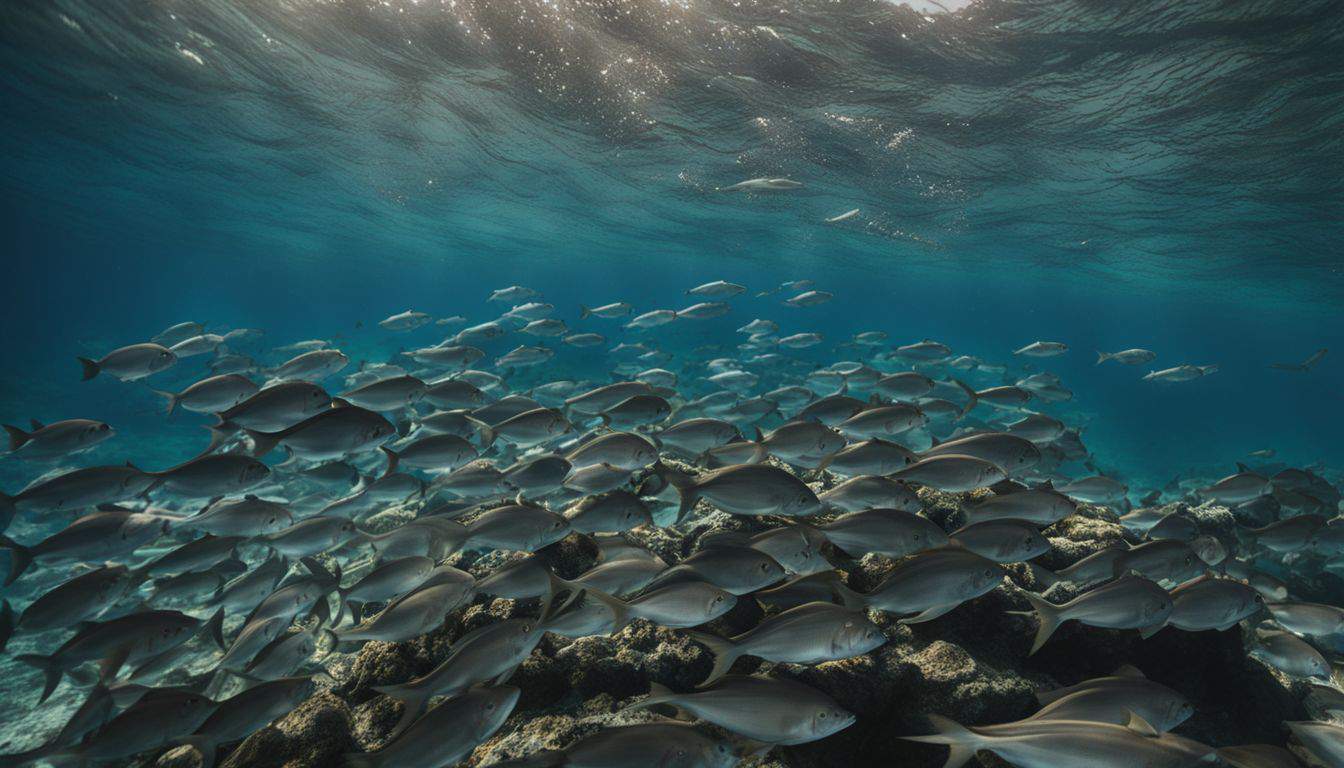
Lessons learned from unsustainable fishing practices
I’ve learned some important lessons from unsustainable fishing practices. One lesson is that overfishing can have negative impacts on coastal communities’ nutrition and health. When fish populations are depleted, it becomes harder for people to access a reliable source of food rich in essential nutrients.
Another lesson is that environmental degradation can occur when fishing methods harm marine habitats and ecosystems. This not only affects the fish population but also disrupts the balance of the entire ecosystem, impacting other marine species as well.
By understanding these lessons, we can see the importance of adopting sustainable fishing practices. It’s crucial to prioritize long-term sustainability over short-term gains. Remember, sustainable seafood choices help support healthy oceans and ensure future generations can enjoy abundant fish populations.
Success stories in sustainable fishing
I have read about some inspiring success stories in sustainable fishing. These stories show that it is possible to harvest seafood in a way that protects the environment and ensures future generations can enjoy fish too.
One example comes from New Zealand, where they have implemented a system called Quota Management. This system gives each fisherman a certain amount of quota for specific fish species, which helps prevent overfishing and allows the population to replenish itself.
Another success story is happening in Mexico’s Gulf of California, where local fishermen are working together with researchers and conservationists to protect endangered species like sea turtles while still making a living from fishing.
Solutions for Sustainable Fishing and Aquaculture
To promote sustainable fishing and aquaculture, it is crucial to know your fish and make informed choices. By understanding the species you consume, their fishing methods, and their impact on the environment, you can support fisheries that prioritize sustainability.
Promoting diversity in seafood consumption is also essential, as it reduces the pressure on overfished stocks while promoting economic and social benefits for local communities. Additionally, initiatives such as certifications for sustainable seafood help consumers identify responsibly sourced products.
Research and technological advancements in aquaculture are further contributing to environmentally friendly practices in fish protein production.
Knowing your fish and making informed choices
When it comes to sustainable fishing and aquaculture, knowing your fish and making informed choices is essential. Here are some tips to help you make responsible decisions:
- Consider the source: Look for information about where and how the fish was caught or farmed. This can help you determine if the fishery or aquaculture operation follows sustainable practices.
- Choose diverse species: Instead of always opting for the same popular fish, try exploring different types of seafood. This helps reduce pressure on overfished species and promotes biodiversity in our oceans.
- Look for certifications: Certain certifications, like the Marine Stewardship Council (MSC) or Aquaculture Stewardship Council (ASC), indicate that the seafood meets specific sustainability criteria. Choosing products with these certifications can give you confidence in your choice.
- Stay informed: Keep up-to-date with news and research on sustainable fishing and aquaculture practices. This will help you make educated decisions based on the latest information.
- Support local fishermen: Buying from local fishermen who use responsible fishing methods can support both their livelihoods and sustainable fishing practices in your region.
Promoting diversity in seafood consumption
I believe that promoting diversity in seafood consumption is crucial for a balanced diet and healthy ecosystems. By choosing a variety of fish species, we can support sustainable fishing practices and help maintain the ecological balance of our oceans.
Not only does this promote the health of marine life, but it also supports local fisheries and coastal communities. Remember, consuming diverse seafood options aligns with sustaining the seafood industry and supporting the communities it relies on.
So let’s make responsible choices when it comes to our seafood consumption and contribute to the overall well-being of our planet.
Initiatives and certifications promoting sustainable seafood
I want to share with you some initiatives and certifications that promote sustainable seafood. These efforts are important for the conservation of marine ecosystems and the well-being of coastal communities.
- Marine Stewardship Council (MSC): The MSC is an international organization that sets standards for sustainable fishing practices. They certify fisheries that meet their rigorous requirements, ensuring that the seafood you consume is responsibly caught.
- Aquaculture Stewardship Council (ASC): The ASC focuses on sustainable aquaculture practices. They certify farms that meet their standards for environmental stewardship, social responsibility, and animal welfare.
- Monterey Bay Aquarium’s Seafood Watch: This program provides consumers with recommendations on sustainable seafood choices. Their website and app offer a seafood guide that rates different species based on their environmental impact.
- Global Sustainable Seafood Initiative (GSSI): GSSI works to ensure the credibility of seafood certification programs worldwide. They benchmark and recognize certification schemes that meet their strict requirements for transparency, rigor, and impartiality.
- Best Aquaculture Practices (BAP): BAP certifies aquaculture facilities based on their adherence to responsible farming practices. They assess factors such as water quality management, feed sourcing, and worker safety.
- Friend of the Sea: This certification program verifies the sustainability of both wild-caught and farmed seafood products. Friend of the Sea looks at various aspects such as fishing methods, bycatch reduction measures, and compliance with regulations.
- Fair Trade Certified Seafood: Fair Trade Certification ensures fair treatment of workers in fisheries and provides economic benefits to coastal communities. It promotes social responsibility along with environmental sustainability in the seafood industry.
- Environmental Defense Fund’s Fishery Solutions Center: This organization collaborates with fishermen, industry stakeholders, and policymakers to develop innovative solutions for sustainable fishing practices while supporting thriving fishing communities.
Research and technological advancements in aquaculture
Research and technological advancements in aquaculture have been crucial in promoting sustainable fishing and aquaculture practices. Through ongoing research, scientists and experts are continuously developing innovative solutions to improve breeding techniques, enhance disease management strategies, and optimize production systems.
These advancements contribute to the growth of sustainable aquaculture farming worldwide.
For example, improved breeding techniques have enabled farmers to produce fish with higher productivity and resilience. This not only ensures a more efficient use of resources but also reduces the reliance on wild-captured fish for seedstock.
Furthermore, advanced monitoring systems and data analytics allow for better tracking of water quality parameters, feed conversion rates, and overall environmental impacts within aquaculture facilities.
Technological innovations such as recirculating aquaculture systems (RAS) have revolutionized fish farming practices by minimizing water usage while maximizing waste treatment efficiency.
RAS enables farmers to maintain optimal conditions for fish growth while conserving water resources and reducing the risk of pollution.
Environmental Challenges in Aquaculture
Aquaculture faces numerous environmental challenges, including the presence of pathogens, parasites, and pests that can harm fish populations. Additionally, harmful algal blooms and the impacts of climate change pose significant threats to the sustainability of aquaculture operations.
Pathogens, parasites, and pests
Pathogens, parasites, and pests can pose significant challenges in both fishing and aquaculture. These infectious agents can affect both farmed and wild fish, leading to disease outbreaks that have detrimental effects on the health of fish populations.
It is important to implement infection control measures and biosecurity protocols to prevent the spread of diseases. Additionally, there is a risk of transmission between farmed and wild fish in aquaculture systems, which can introduce nonnative pathogens and parasites into the environment.
This highlights the need for disease surveillance and monitoring efforts to ensure the health of aquatic ecosystems. Overall, understanding these environmental challenges is crucial in promoting sustainable practices in fishing and aquaculture.
Harmful algal blooms and climate change impacts
Harmful algal blooms (HABs) are a big concern when it comes to fishing and aquaculture. These blooms, which are caused by certain types of algae, can be harmful to aquatic life in both marine and freshwater ecosystems.
Not only do they reduce the ability of fish and other organisms to find food, but they can also lead to population decline or even death. Climate change and weather variability can make these HABs worse, affecting food production in aquaculture systems.
So it’s important for us as fishing enthusiasts to be aware of the impacts that harmful algal blooms have on our favorite pastime and take steps towards mitigating their effects.
Innovative Approaches in Aquaculture
Recirculating aquaculture systems and offshore aquaculture are two innovative approaches that aim to increase productivity and sustainability in the industry.
Recirculating aquaculture systems
One innovative approach in aquaculture is the use of recirculating aquaculture systems (RAS). These systems are designed to reduce the environmental impact of fish farming by reusing water.
RAS provide a constant and controlled environment for fish production, which helps ensure their health and growth. Water treatment steps are used in RAS to purify the water and maintain a clean and safe environment for the fish.
This allows for high-density fish production under controlled conditions, reducing the reliance on wild-caught fish and providing a more sustainable source of fish.
Offshore aquaculture
Offshore aquaculture is an exciting and promising method of fish farming that takes place in the open ocean, away from the coast. It’s a way to raise fish and shellfish in exposed areas beyond significant coastal influence.
This emerging technology has great potential for economic growth and sustainable seafood production. Farmed seafood from offshore aquaculture is high in omega-3 fatty acids, which are good for our health.
In the United States, offshore aquaculture presents significant opportunities for job creation and supporting local economies.
Governance and Regulations in Fishing and Aquaculture
Governance and regulations in fishing and aquaculture play a crucial role in ensuring the sustainability of our oceans and freshwater ecosystems.
International and local regulations
International and local regulations play a critical role in governing fishing and aquaculture practices. These rules are put in place to ensure the sustainable management of our oceans and protect marine ecosystems.
The Food and Agriculture Organization (FAO) has published flagship publications that provide valuable insights into the global status of fisheries and aquaculture, giving us a better understanding of the challenges we face.
Additionally, NOAA Fisheries has developed informative fact sheets on the laws and regulations governing aquaculture, providing fishermen with important information to follow responsible fishing practices.
Monitoring and enforcement of sustainability practices
Monitoring and enforcing sustainability practices is crucial in ensuring the long-term health and conservation of fish populations and aquatic ecosystems. It involves implementing rules and regulations to promote responsible fishing techniques and protect against overfishing.
By monitoring fishing activities, authorities can track catch levels, species composition, and compliance with fishing regulations.
Enforcement of sustainability practices helps prevent illegal fishing activities, such as illegal netting or exceeding catch limits. This ensures that fish stocks are not depleted beyond their ability to recover.
Regulatory bodies play a vital role in overseeing these practices by conducting inspections, issuing permits, and imposing penalties for non-compliance.
Effective monitoring systems also rely on technological advancements like satellite tracking devices to monitor vessels’ movements in real-time. This enables authorities to detect any suspicious or unlawful activities promptly.
Conclusion on Fishing Vs. Aquaculture
In conclusion, achieving sustainable fishing and aquaculture requires knowledge, informed choices, and responsible practices. By understanding the importance of sustainability in our seafood consumption, promoting diversity, and supporting initiatives for sustainable seafood, we can contribute to the well-being of fish stocks and marine ecosystems.
Additionally, embracing innovative approaches in aquaculture and ensuring effective governance and regulations are in place will help us achieve a balance between economic benefit and environmental stewardship.
Let’s work together to ensure a thriving future for both fishing and aquaculture.
FAQs on Fishing Vs. Aquaculture
1. What is the difference between fishing and aquaculture?
Fishing refers to catching fish from their natural habitats in lakes, rivers, or oceans, while aquaculture involves raising fish in controlled environments like ponds or tanks.
2. Is fishing or aquaculture more sustainable?
Aquaculture has the potential to be more sustainable because it allows for controlled breeding and feeding of fish, reducing pressure on wild populations. However, responsible fishing practices can also contribute to sustainability.
3. Can anyone start a fishing or aquaculture operation?
Starting a fishing operation usually requires obtaining licenses and permits specific to the location and type of fishing being done. Similarly, starting an aquaculture operation may require permits and knowledge about raising fish properly.
4. Which method provides better quality fish: fishing or aquaculture?
Both methods have the potential to produce high-quality fish when practiced responsibly. The quality depends on factors such as proper handling techniques and environmental conditions throughout the process.
5. How can I choose between fishing and starting an aquaculture operation?
Choosing between fishing and starting an aquaculture operation depends on your preferences, available resources (such as access to bodies of water), regulations in your area, desired level of control over production, and market demand for either option

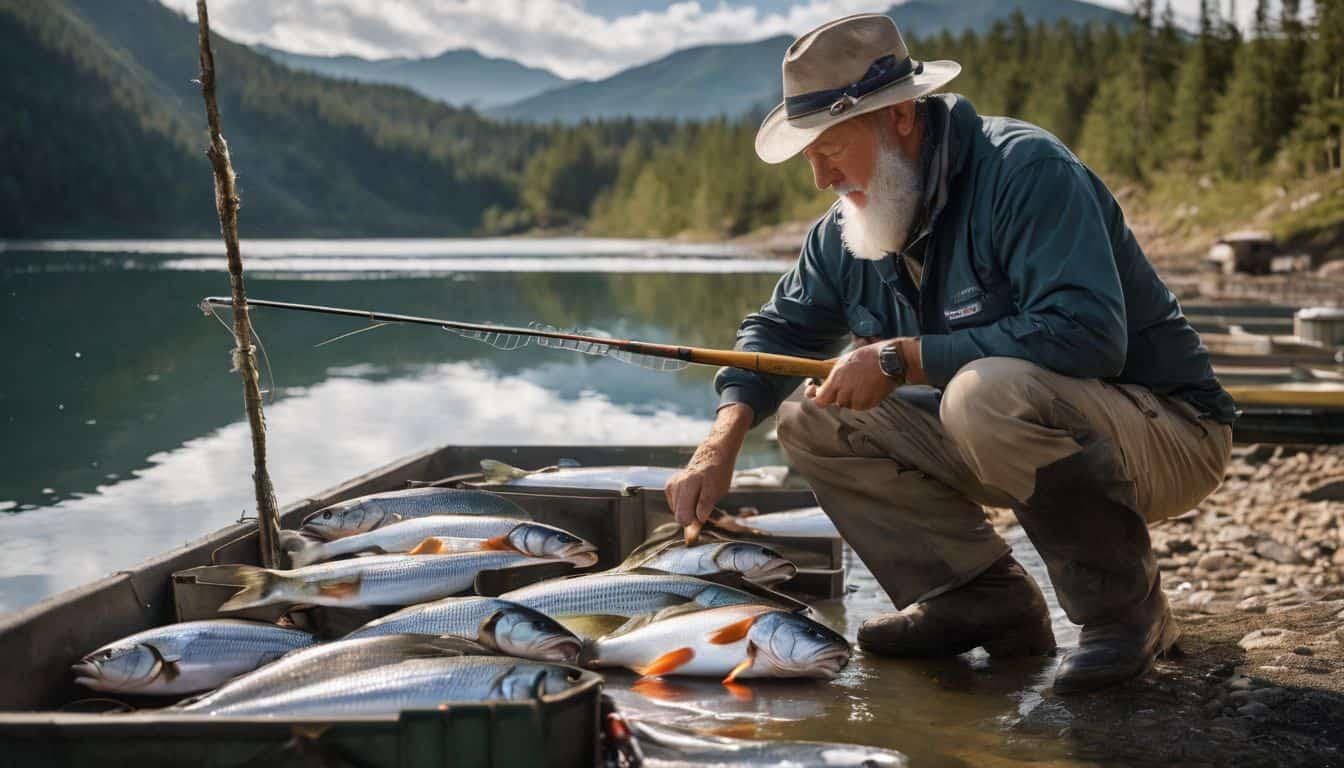
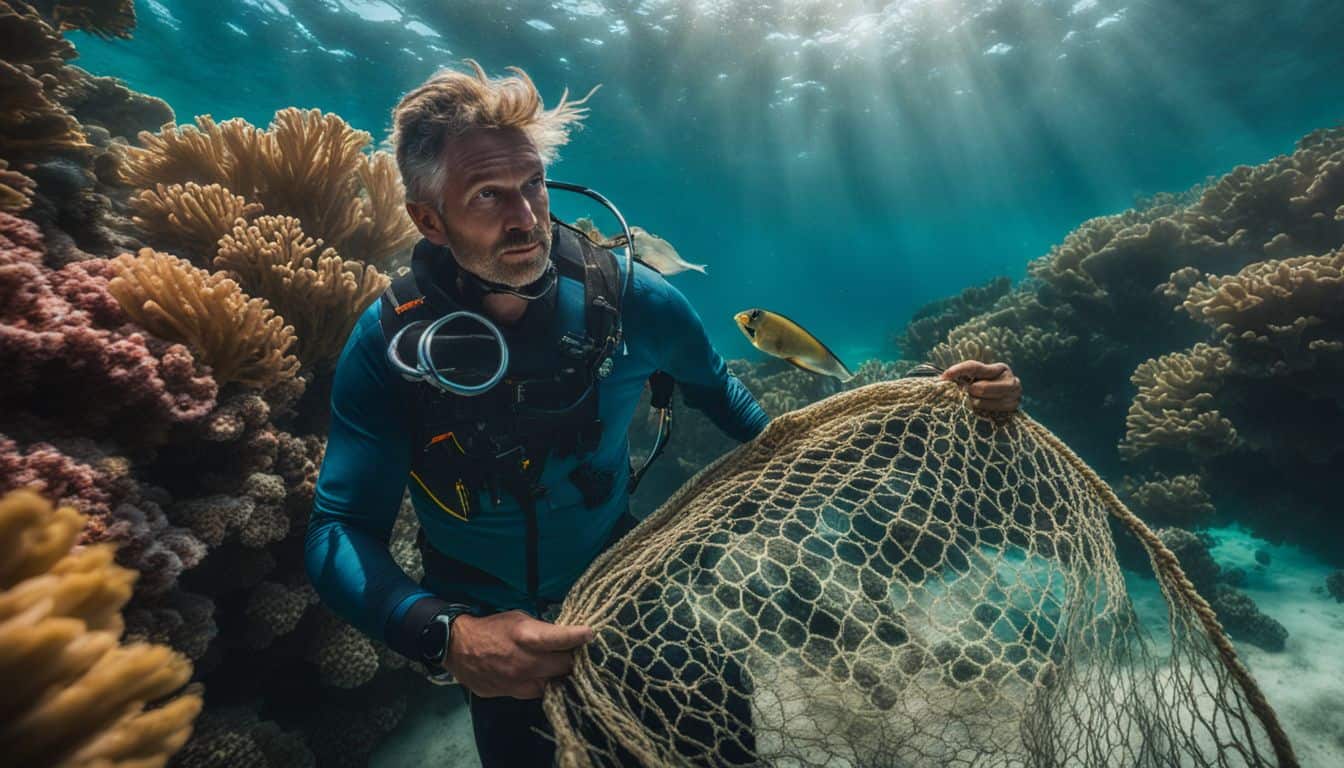
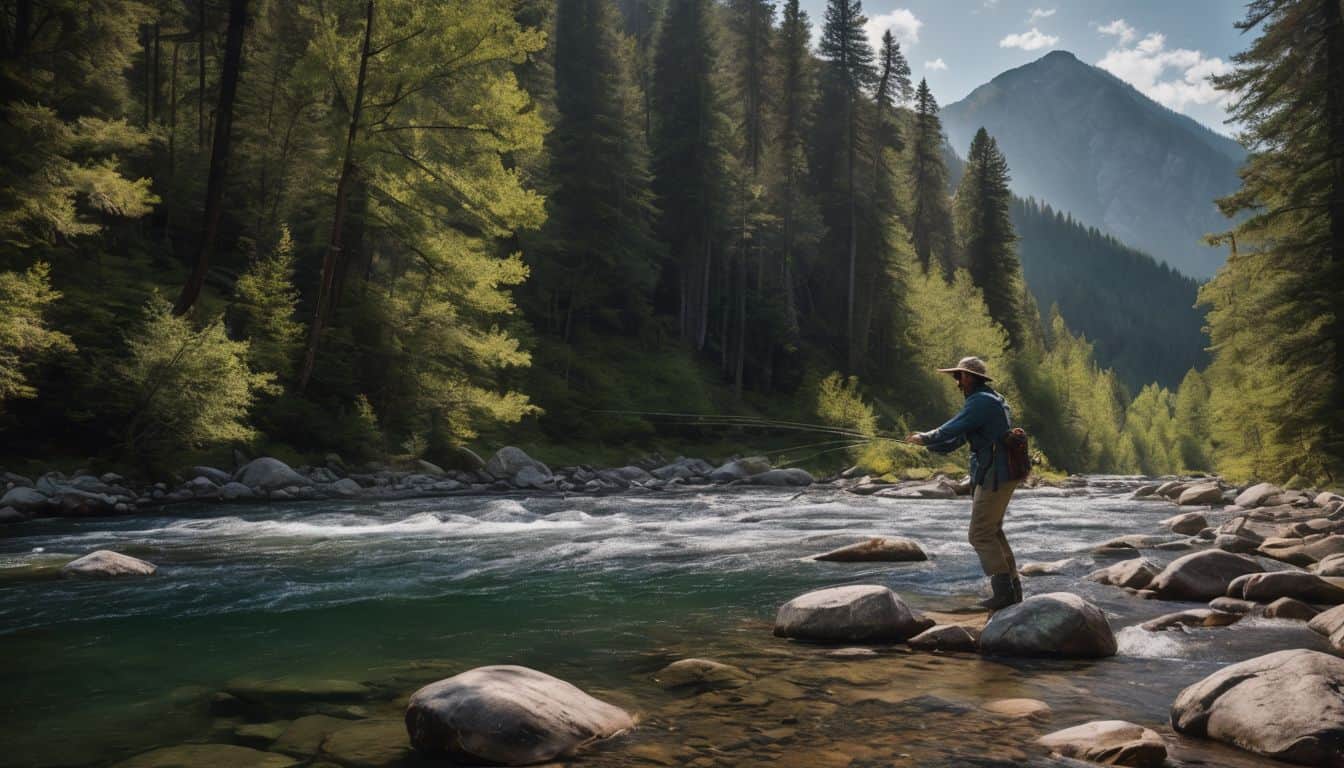
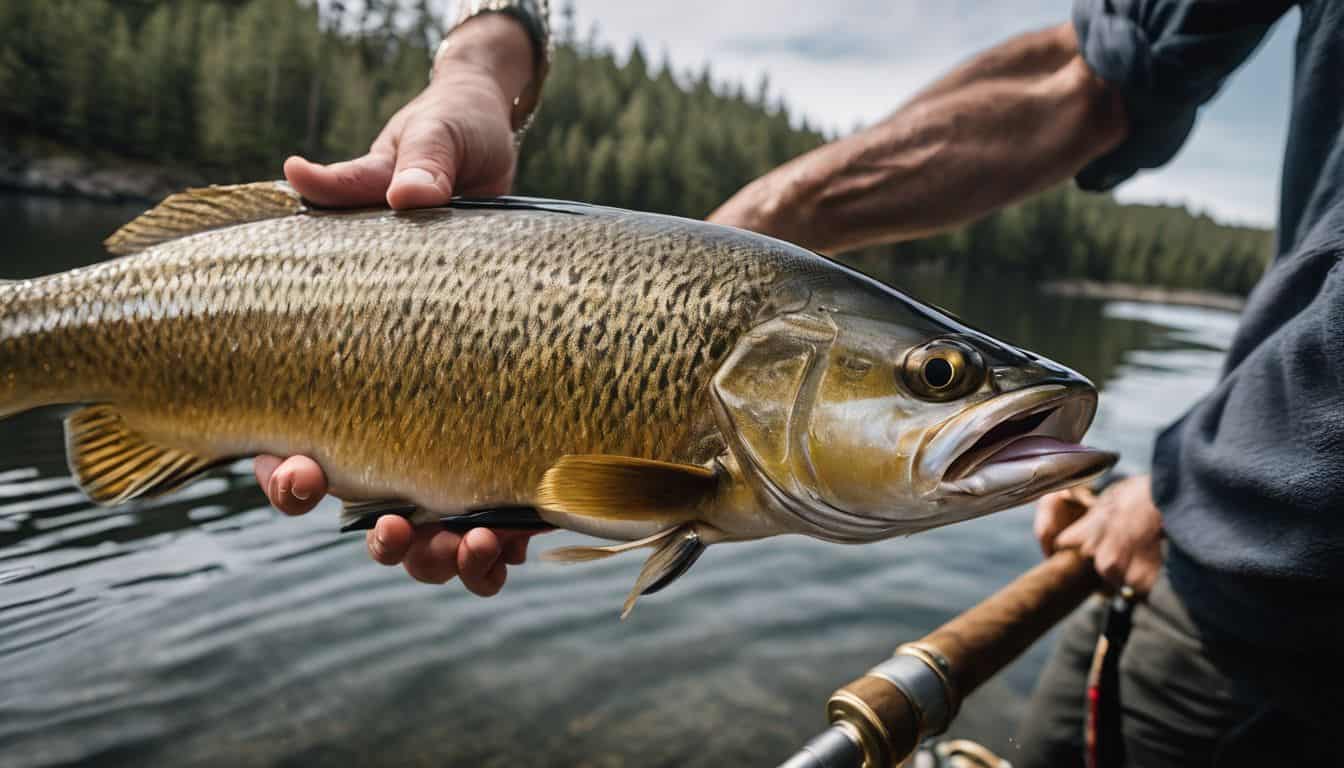
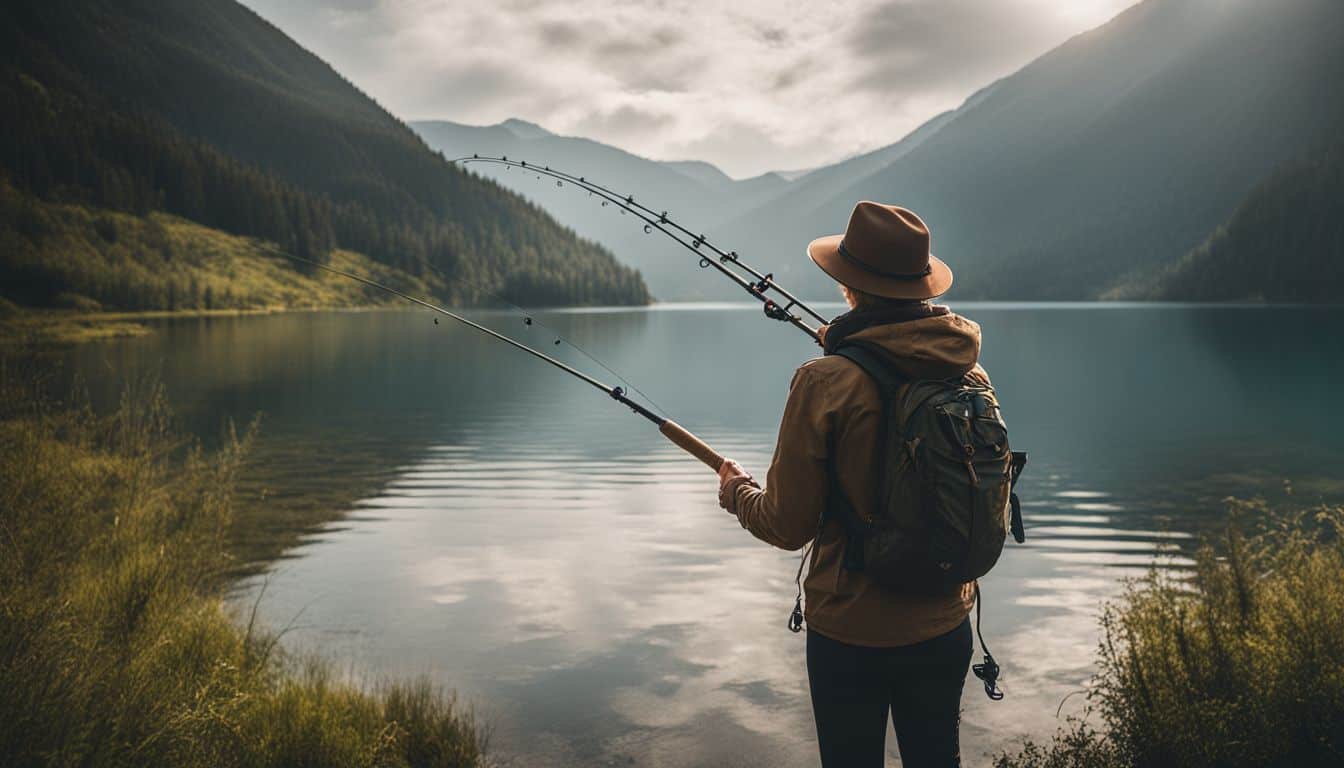
Leave a Reply